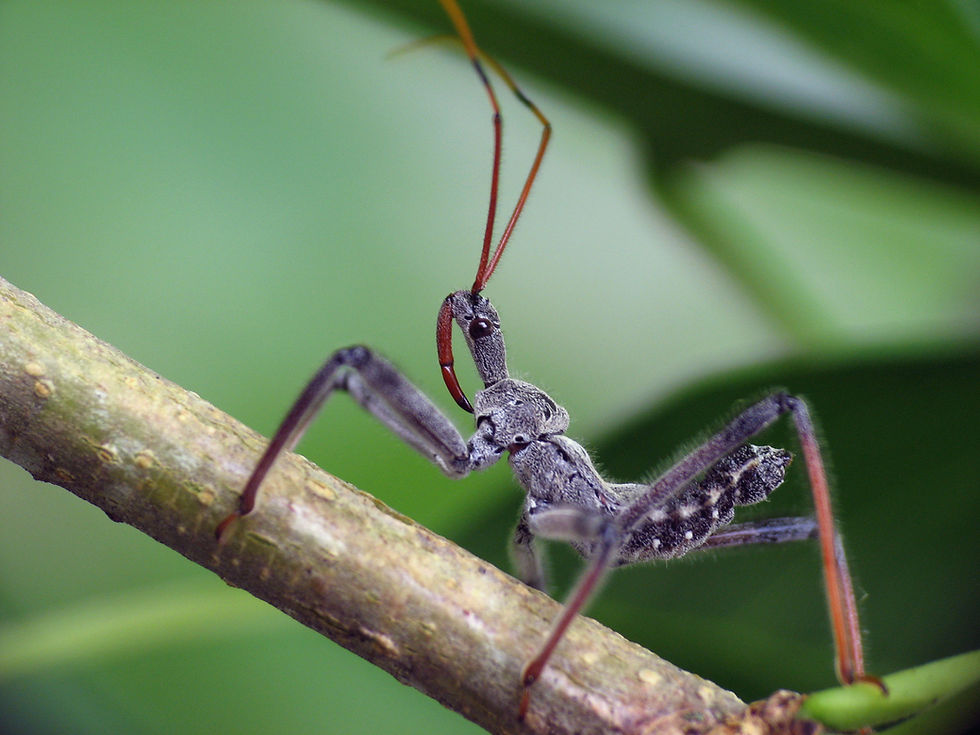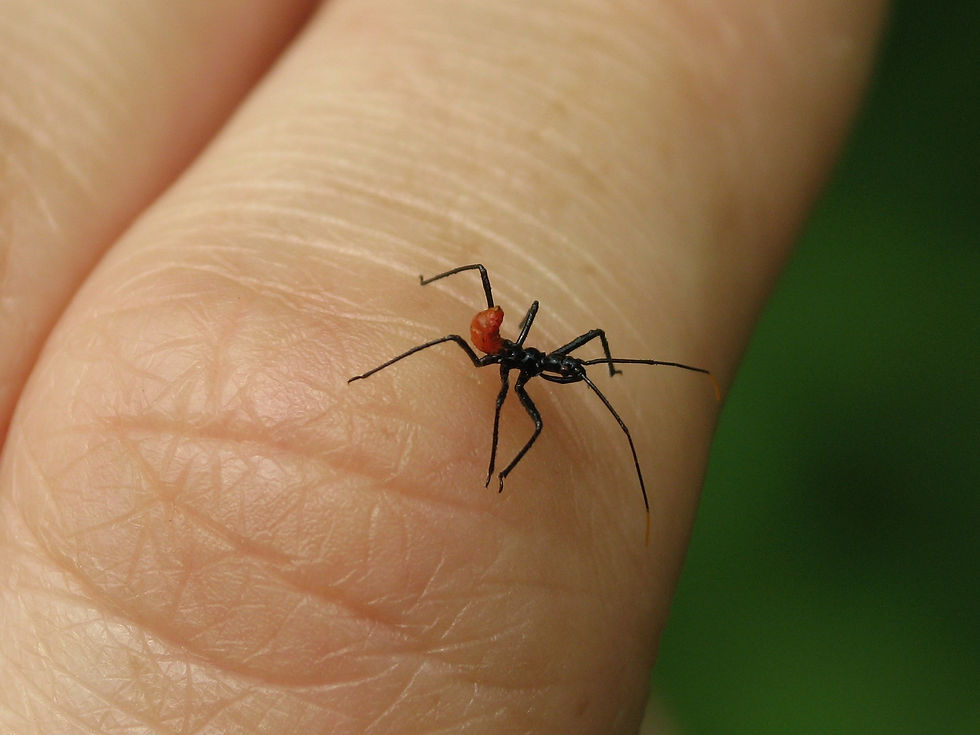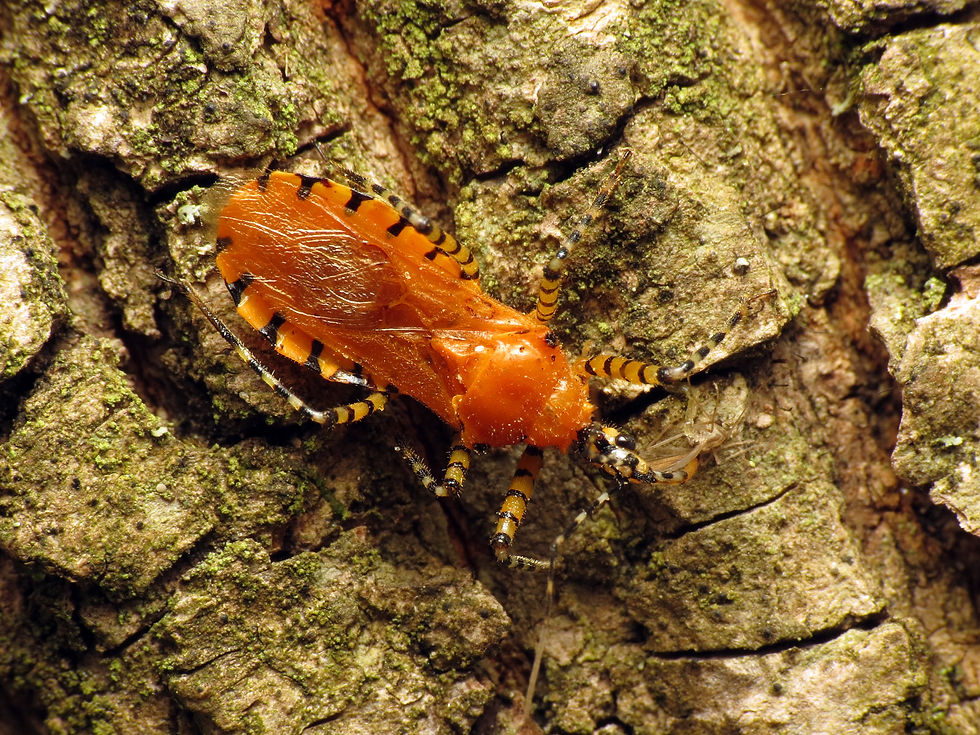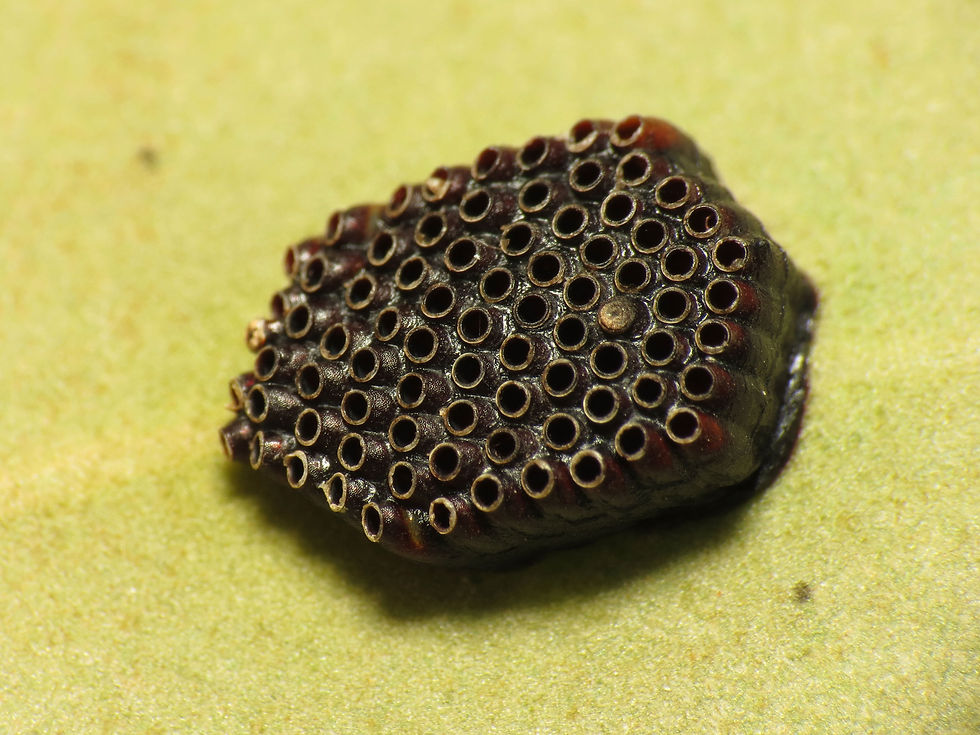Beneficial Bugs - Assassin Bugs
- Amanda Whispell

- Jul 7, 2025
- 3 min read
Updated: Jul 8, 2025
When you hear the word assassin, you might think of something dangerous or unwelcome— but in the garden, assassin bugs are actually your allies. These fascinating, stealthy predators are incredibly beneficial insects to have around, as they help to naturally control a variety of common pests. Let’s talk about what makes assassin bugs a powerful (and under appreciated) asset in any pollinator- or eco-friendly garden.

What Are Assassin Bugs?
Assassin bugs belong to the insect family Reduviidae, and there are over 100 species in North America alone. You may notice that they look a lot like the squash bugs (Anasa tristis) or leaf-footed bugs (family Coreidae) you find in your garden and that is because they all belong to the same order—Hemiptera, the “true bugs”. Hemipterans all have specialized piercing and sucking mouthparts called a proboscis which are, for the most part, for piercing and sucking fluid out of plants (Fig. 1). But for the assassin bugs, they use their curved proboscis to pierce and immobilize their prey, inject it with lethal saliva that liquefies the insides, and then suck out the gooey bug smoothie. Most can also be recognized by their long legs and narrow heads. Nymphs are smaller and can be completely different colors, like the Wheel Bug nymph in Figure 2 compared to the adult in Figure 3.


You might spot them on flowers, shrubs, or vegetables—waiting motionless or slowly stalking their next meal. Some well-known species include the Wheel Bug (named for the spiny “gear” on its back (Fig. 3) and the Spiny Assassin Bug (Fig. 4), which are commonly found in gardens and landscapes here in Virginia.

How Do Assassin Bugs Help?
Assassin bugs are voracious predators! Unlike pollinators or decomposers, their primary role is pest control (Fig. 5). They feed on a wide range of garden pests, including:
Aphids
Caterpillars
Japanese beetles
Leafhoppers
Thrips
Whiteflies
Squash bugs
This natural pest control reduces the need for chemical pesticides, which can harm beneficial insects and pollinators. By controlling pest populations, assassin bugs help protect your vegetables, flowers, and ornamental plants from damage, allowing your garden to thrive.
Are Assassin Bugs Dangerous?
To garden pests—absolutely, to humans—not really, as long as you respect their space. Assassin bugs do not seek out human interaction and are not aggressive. However, if handled or provoked, some species can deliver a painful bite as a defense mechanism.
It’s best to observe them rather than touch them.

How to Attract Assassin Bugs to Your Garden
Encouraging assassin bugs is easy if you maintain a habitat that supports biodiversity. Here’s how:
Grow a variety of flowering plants to attract other insects (their food sources)
Leave some wild areas or native plants untouched for them to hide and hunt
Avoid chemical insecticides, which can kill assassin bugs and their prey
Leave their prey alone—as much as you want to remove those aphids, if you do there will be no reason for these predators to visit your plants and then they won’t be there when you really need them.
Don’t squish their eggs (Fig. 6) if you find them on your plants. They are quite distinctive in their shape.

In Summary
Assassin bugs are some of your garden’s hardest-working residents. By patrolling your plants and feeding on destructive pests, they offer free, chemical-free pest control with very little effort on your part.
So next time you spot one creeping along a stem—don’t panic. That’s not a villain; that’s your garden’s personal bodyguard.
Fun Facts about Assassin Bugs
Some species camouflage themselves with debris (below left) or the carcasses of their prey (below right)—stealthy and stylish.
The wheel bug can grow up to 1.5 inches long and is one of the largest assassin bugs in North America (Fig. 3).
Assassin bug nymphs look like tiny versions of the adults and are just as eager to eat pests (Fig. 2).
(left) Masked Hunter (Reduvius personatus) nymph camouflaged with debris. Photograph © KatzBird. (flickr); (right) Inarra flavopicta nymph. Photograph © budak. (flickr)
Read more articles in the Summer 2025 CSWCD Newsletter.








Comments